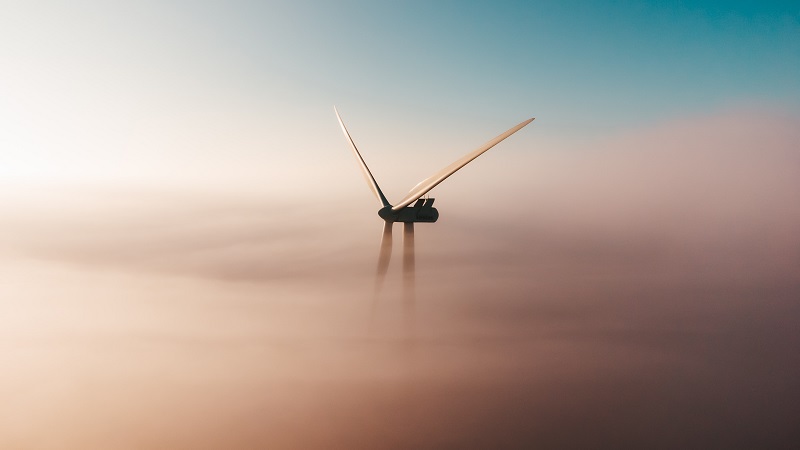By Alec Cutler, manager of the Orbis Global Balanced and Global Cautious funds
Electric vehicles, batteries, solar panels, and windmills dominate the headlines around the energy transition, but they are only a fraction of the whole project. Boring bits of the system may do just as much to propel the transition forward.
Yet you do not need to be a sustainability focused investor to see the benefits. The appeal for us is simply that these neglected companies may be much more attractive investments.
Cables, for example, are less widely discussed but represent a quarter of the cost for an offshore wind project, with the world needing to roll out about 5,000km of subsea cables every year.
To demonstrate how parts of value chain fit together, let’s start with a typical offshore wind project – the Galloper wind farm off the eastern coast of England.
Its 56 windmills were built and maintained by Siemens Gamesa (a unit of Siemens Energy), while Helix operates a fleet of undersea robots and support ships for the undersea trenching and burial work for the cables connecting those turbines.
On top of these, there is also Prysmian manufacturing the high-voltage cables themselves, which connect the project to adjacent windfarms and a further 45 kilometres back to shore.
See also: Rodger Kennedy launches outsourced distribution firm
As the world adopts broadly dispersed power farms located far away from cities, our energy system will become much more cable intensive. Cables can represent a quarter of the cost for an offshore wind project, and to support wind farms and international interconnectors, the world will need to roll out about 5,000km of subsea cables every year (outside of China, which uses its own suppliers).
That is good news for Prysmian, which is the largest of only three major Western firms with the specialised factories to make those cables and the specialised ships to lay them.
All that underwater work also augurs well for Helix. It turns out that the skills (and robots) that are useful for servicing offshore oil wells transfer quite well to servicing offshore wind farms.
Wind farms are not the only source of growing cable demand. Existing grids need cables too, in part because the world’s electric grids are aging. On average, grid equipment in the US and Europe is older than it was ever designed to operate – in some places, people are charging Teslas using cables installed before World War Two.
The US Department of Energy reckons we will need to expand grid infrastructure by 60% by 2030. Globally, that translates into $650bn of estimated grid investment every year – double the level of recent years.
A system juggling intermittent power sources, batteries, home solar panels, power-hungry artificial intelligence data centres, and electrified cars and factories will be both more burdened and more complex than the grid is today. More electricity needs to travel longer distances in more directions to more locations, and the likes of Siemens Energy and Mitsubishi Heavy Industries are well placed to benefit from these increasing needs.
See also: Kevin Murphy exits Schroders after 24 years
However, intermittency – power sources that are not always on – poses challenges beyond grid infrastructure. As systems become more reliant on wind and solar power, they need to keep the lights on when the wind isn’t blowing and the sun isn’t shining.
Drax, a UK power generator, provides reliable baseload electricity as it can run its biomass plant 24/7. It also plays a role in energy storage with its ‘pumped hydro’ facility in Scotland.
When power is plentiful and cheap, Drax uses electrical pumps to move water uphill into a reservoir, then later lets it flow back downhill through turbines when power is scarce and better priced.
But the move to a cleaner energy system is bigger than just the electric grid – it also involves industry and buildings. Companies need to electrify their operations and switch their heat source from coal to gas.
Beyond industry, buildings of all kinds can be much more energy-efficient than they are today. In Europe – where buildings account for 40% of total energy consumption – companies such as Signify bring a simple solution: just replace the lights.
Lighting accounts for nearly half of cities’ total electricity use, and replacing inefficient lights with Signify’s excellent LED systems can cut the related carbon emissions by 75% or more.
The preceding sketch barely scratches the surface of the major energy transition themes, but it is an encouraging story. There are challenges and trade-offs, but these companies are applying their skills in innovative ways.
We think these seemingly boring companies have strong prospects that are underappreciated by the market.
Drax for example, trades for less than five times earnings, while Helix and Signify trade for less than ten times free cash flow. Siemens Energy is struggling to work through quality control issues at its wind turbine unit, but the long-term value of its businesses is substantially higher than its current market capitalisation.
The energy transition features no shortage of complexity and controversy. Put those together, and it also features plenty of investment opportunity.
See also: Janus Henderson’s Lloyd: You haven’t missed the market rally yet










